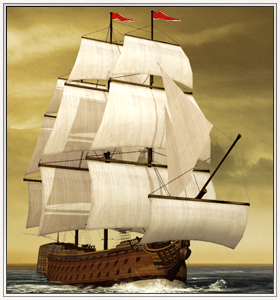Difference between revisions of "HMS Victory (ETW Unit)"
Tango12345 (talk | contribs) m (updating categories) |
|||
| Line 12: | Line 12: | ||
*[[Image:Britain_flag.jpg|25px]] [[Great Britain (ETW Faction)|Great Britain]] | *[[Image:Britain_flag.jpg|25px]] [[Great Britain (ETW Faction)|Great Britain]] | ||
| − | |||
[[Category:Empire Total War Units]] | [[Category:Empire Total War Units]] | ||
| + | [[Category:ETW Ships]] | ||
Revision as of 00:32, 14 July 2011
Overview
Like all first rates, Victory is not a handy ship, being both slow and unresponsive. Good sailing qualities, however, are secondary to the weight of broadside that she can both deliver and withstand. This is important in a warship that is intended to form the centrepiece of any squadron and act as an admiral’s flagship.
Completed in 1765, Victory is probably the most famous first rate in history, and the only one still in existence. The work of naval architect and genius Sir Thomas Slade, Victory was always intended to be a flagship; the Royal Navy preferred the smaller 74s as battleships. Forty years later, in 1805, she was Horatio Nelson’s flagship at Trafalgar, a battle which gave the Royal Navy undisputed mastery of the world’s oceans for more than a century.
As of 2008, the ship is still the flagship to “CINCNAVHOME”, a rather unromantic NATO-speak acronym for the Royal Navy’s Second Sea Lord. The ship is in dry dock in southern England as part of the Portsmouth Dockyards museum. Modern RN warships still salute the Victory as they enter and leave harbour.
